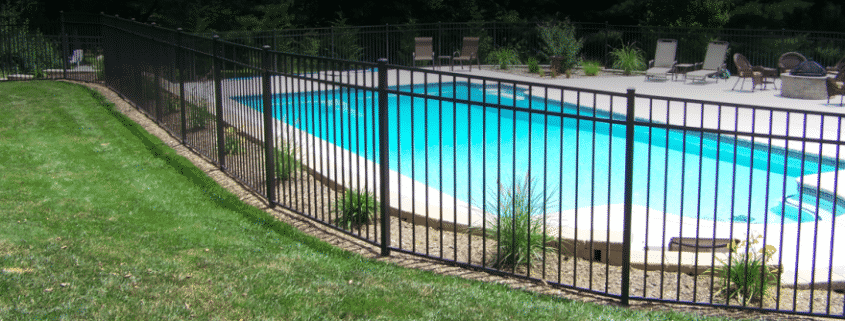
How to Winterize a Fence
Your clients may know the importance of winterizing their car and their home, but are they aware of the steps that must be taken to prepare their fence against the encroaching ice and cold? As a fence distributor and installer, it can be concerning to know that your clients or their neighbors may think poorly of your work because of preventable wear and tear caused by the winter months. Luckily, winterizing one’s fence – no matter what material it’s made of – is a simple and inexpensive process. Just share the following tips with your clients and marvel at how much better their fences look when spring rolls around.
Winterize Wooden Fencing
Wood – unlike aluminum or vinyl – is susceptible to biological rot caused by moisture (like that which soaks into it when snow falls or ice melts). Without protection, an entire fence might succumb to the hazards of dry rot and mold. This is a year-round issue for wood – which is why it’s so important to check one’s fencing before winter comes for any existing rot, splintering, chipped paint, loose elements or broken pieces. The harsh conditions of the coming months are tough enough on fences in perfect condition; those already suffering from mold, rot or breakage will only see those conditions exacerbated throughout winter. Instruct your clients to repair any lingering issues while it’s still dry and relatively warm and to finish the repair job with a fresh coat of sealant. If there are boards that are beyond repair – but your client does not wish to have them replaced – they may be able to address the cracks and holes with careful application of wood putty. Be sure also that they read the instructions on their particular brand of sealant so that they’re a
ware of proper usage and reapplication procedures. Your client, as a final step, can splash a bit of water against their fence; if it beads on the surface, their wood is well-protected against whatever winter might bring.
Winterize Aluminum Fencing
As with wooden fencing, it’s imperative that time is taken before winter arrives to address any damage that the fence has already experienced. Unlike wooden fencing, the durability of aluminum fences means that the damage in question will usually be rust or flaked paint as opposed to loose or broken pieces. Instruct your client to examine the length of their aluminum fence; if rust has already set in, suggest that they scrub it away with a wire brush and that they seal it (and any other exposed sections) with rust-proof paint. Make sure they look at the very bottom of the fence as well, as the lower links can take damage from mowers and weed whackers that often escapes the naked eye. Their inspection should also include a close examination of the fence’s hinges and hardware; these moving parts must be free of dirt and sprayed with a rust inhibitor to ensure that they’ll still be working correctly come spring.
Winterize Vinyl Fencing
Again, the first step your client will want to take is to examine the length of their vinyl fence to identify and fix any loose or missing elements. This is the step in the process where – no matter the material from which their fence is made – you may be able to offer your client professional repair services, especially if they’re not comfortable making the repairs on their own. Either way, the next step to take once the fence is whole again is to examine its parts for any signs of dirt or mold. Both elements are much harder to clean off if they’ve been frozen to the material, and both are more commonly found on parts of the fence that sit within damp and shady areas. A power washer can be used on whatever dirt or mold they find, which makes the cleaning process much easier (a fact that can be used as a marketing tool if you’re trying to sell your client on the benefits of vinyl fencing).
Conclusion
A well-kept fence adds value, security, and style to a home. A poorly kept fence, on the other hand, can speak badly both of the owner and of the person who installed it. Remember, it’s not just your client’s reputation at stake here; if your client’s neighbors see a rotting and broken fence come spring, they’re not exactly going to be chomping at the bit to have their fence installed anytime soon. Though it can often make you feel helpless to know that your business’ reputation is in the hands of your clients, there are steps you can take to ensure that every fence you install is maintained well and comes out of winter looking as fresh and new as the blooming flowers. If you have any further questions about how to best teach fence maintenance, please feel free to contact one of our knowledgeable customer service representatives at any time.
